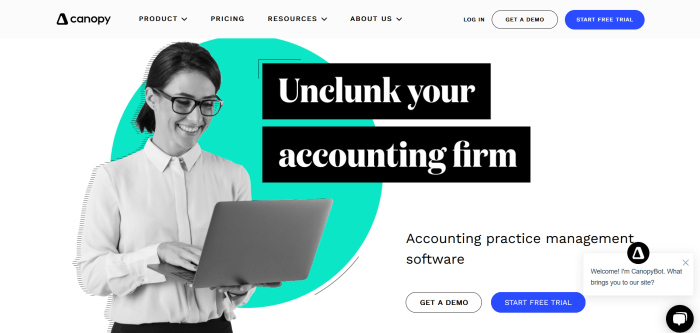Navigating the complex world of sales and use taxes can be a significant headache for businesses, regardless of size. From calculating the correct tax rates to ensuring accurate reporting, maintaining compliance can be time-consuming and prone to errors. Fortunately, sales and use tax compliance software can significantly ease this burden. This comprehensive guide delves into the benefits, features, and considerations surrounding this vital tool for businesses.
Understanding the Importance of Sales and Use Tax Compliance
Sales and use taxes are levied on the sale of goods and services and the use of certain tangible personal property. Failure to comply can lead to substantial penalties, fines, and even legal repercussions. Businesses operating across multiple jurisdictions face a particularly complex challenge, requiring detailed knowledge of varying tax rates, regulations, and reporting requirements. This is where dedicated software solutions come into play.
Key Benefits of Sales and Use Tax Compliance Software
- Automated Calculations: Software automates the complex calculations involved in determining the correct sales and use tax amounts, minimizing errors and saving valuable time.
- Streamlined Reporting: Automated generation of accurate and compliant tax reports, simplifying the filing process and reducing the risk of late submissions.
- Jurisdictional Management: Software can handle the complexities of multiple tax jurisdictions, providing comprehensive insights into rates and regulations across different locations.
- Inventory Management Integration: Many solutions seamlessly integrate with inventory management systems, ensuring accurate tracking of taxable items and simplifying the tax calculation process.
- Improved Accuracy and Efficiency: Reduced manual effort and potential for human error leads to greater accuracy and efficiency in tax compliance.
Features to Look for in Sales and Use Tax Software
Not all software is created equal. Choosing the right solution requires careful consideration of its features. Key features to look for include:
Tax Rate Management and Updates
The software should seamlessly handle dynamic tax rate changes and updates across different jurisdictions, ensuring your business is always compliant. This automated feature prevents costly errors arising from outdated information.
Reporting and Filing Capabilities
The solution should allow for easy generation of reports, both for internal review and for filing with relevant authorities. This includes customized reports and the ability to export data for further analysis.
Integration with Existing Systems
Look for software that integrates seamlessly with your existing accounting, inventory, and e-commerce platforms. This integration streamlines data flow and reduces manual data entry, further enhancing efficiency.
User-Friendly Interface and Support, Sales and use tax compliance software
A user-friendly interface is crucial for ease of use, particularly for employees unfamiliar with tax compliance. Robust support options are also essential to help address any questions or issues.
Choosing the Right Software for Your Business Needs
The ideal sales and use tax compliance software will depend on your business size, industry, and operational complexity. Consider these factors when making your selection:

Source: salestaxdatalink.com
Business Size and Complexity
Small businesses might benefit from simpler, more affordable options, while larger enterprises with complex operations may require more comprehensive and scalable solutions.
Industry-Specific Requirements
Some industries have unique sales and use tax regulations. Choose software tailored to your industry to ensure full compliance.
Scalability and Future Growth
Consider how the software can adapt to your business’s future growth and evolving needs. A scalable solution will prove more valuable in the long run.
Frequently Asked Questions (FAQ): Sales And Use Tax Compliance Software
- Q: How much does sales and use tax compliance software cost?
A: Pricing varies greatly depending on the features, functionality, and vendor. Contact potential providers for detailed pricing information.
- Q: Can I integrate this software with my existing accounting software?
A: Many solutions offer integration capabilities with popular accounting software packages. Check vendor documentation for compatibility details.
- Q: Is training available for using the software?
A: Most vendors provide training resources, either online or through in-person sessions. Inquire about the availability and nature of training when evaluating different solutions.
Conclusion
Implementing sales and use tax compliance software is a crucial step towards streamlining your business operations and minimizing the risk of penalties. By carefully evaluating your needs and choosing a solution that aligns with your specific requirements, you can ensure smooth compliance, reduced administrative burden, and improved financial health.
References
IRS Sales and Use Tax Information
Tax.gov – Sales Tax
Call to Action
Ready to take control of your sales and use tax compliance? Explore the range of software solutions available and find the perfect fit for your business. Visit our website to discover more about how we can help you streamline your tax processes and ensure long-term compliance.

Source: squeezegrowth.com
FAQ Insights
What are the common types of sales and use tax compliance software available?
Several types of software cater to different business needs, ranging from cloud-based solutions to on-premise systems. Some specialize in specific industries or tax jurisdictions, while others offer a more general approach. It’s crucial to evaluate your specific requirements and choose a solution that meets your business size, complexity, and tax landscape.
How can I ensure my chosen software is up-to-date with the latest tax laws?
Reliable providers often offer regular updates and feature enhancements to maintain compliance with evolving tax regulations. Look for solutions that provide automatic updates and access to current tax rates and codes. This ensures your software remains current and accurate.
What support options are available for using sales and use tax compliance software?
Most providers offer various support channels, such as online documentation, FAQs, and dedicated customer service teams. These resources can help users navigate the software effectively and resolve any issues that may arise.